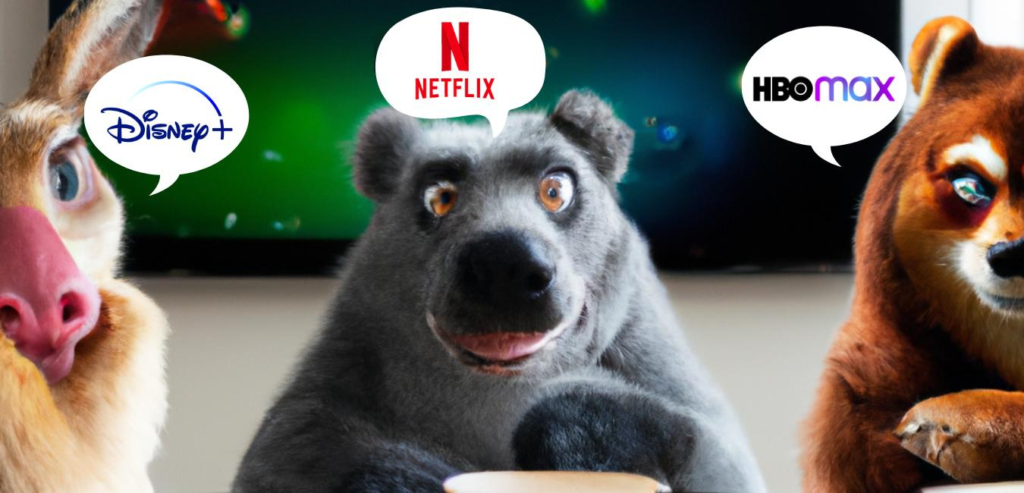
- 17th March 2023 |
- 5 minutes
Home >> Insights >> Content Hub >> The Future of Streaming: TV and Streaming Bundles to Consolidate the Market and Improve Advertising in 2023
The Future of Streaming
TV and streaming bundles to consolidate the market and improve advertising in 2023.
The End of Video Streaming as We Know It? As The TV And Streaming Markets Continue To Evolve, Bundles And Advertising Strategies Will Be Critical To Success In 2023.

Welcome to a "new era" of convenient and cost-effective viewing is here with the rise of popular TV and streaming bundles that offer top streaming services and traditional channels all in one package.
According to recent statistics, streaming services accounted for 68% of all TV viewing in the United States in 2021. This trend is only expected to continue, with the streaming industry projected to reach a revenue of $139.3 billion by 2024. Furthermore, according to a report by ResearchAndMarkets, the global video streaming market size was valued at $50.11 billion in 2020 and is expected to reach $184.3 billion by 2027, growing at a CAGR of 19.1% from 2021 to 2027. This report also noted that the increasing demand for high-quality video content, a rise in internet penetration, and the availability of low-cost streaming services are some of the key factors driving the growth of the market.
The Humble Bundle.
The Convenience and Cost-Effectiveness of TV and Streaming Bundles for Consumers.
TV and streaming bundles have become increasingly popular in recent years as consumers look for more convenient and cost-effective ways to access the content they want to watch. Bundles typically include a variety of streaming services, such as Netflix, Hulu, and Disney+, as well as traditional TV channels, all bundled together into a single package. The benefit of these bundles is that they make it easier for consumers to find and access the content they want to watch, rather than having to navigate multiple apps and subscriptions. Additionally, these bundles can also offer significant cost savings for consumers, as many of them offer a lower monthly rate than subscribing to each service individually.
Streaming Bundle Boom: How the Glut of Content is Changing the Media Industry Landscape.
The rise of streaming bundles has caused an overload of content for consumers and a need for media companies to focus on quality over quantity.
However, as the number of streaming options continues to grow, the media industry is facing a realignment of its budgets as they struggle to meet the demands of consumers. The rush to launch streaming platforms in the past few years has resulted in a glut of content, much of which is forgettable, and more than the population of connected consumers can realistically consume. As a result, the media industry will be forced to live within its means and focus on producing quality content rather than quantity.
The Impact of the Streaming Wars with the Consolidation and Cost-Cutting in the Streaming Market.
The streaming market has become increasingly crowded with the launch of new platforms from legacy media brands.
The streaming wars have also resulted in a plethora of new platforms and a surplus of content, with many legacy media brands launching their streaming platforms to compete with streaming giants like Netflix. However, as Wall Street is no longer in thrall to a potential streaming gold rush, media companies will have to cut costs, which may lead to layoffs and the cancellation of shows. Streaming services such as Netflix may also introduce ad-supported tiers to generate additional revenue.
In a survey conducted by Statista in 2020, it was found that the most popular streaming service in the United States was Netflix, with a market share of 31%. Amazon Prime Video and Hulu followed with a market share of 22% and 12%, respectively. Other notable streaming services included Disney+ and HBO Max, with market shares of 7% and 5%, respectively. And although this might have changed a bit in the past couple of years, this leads us to think that if “the bundle trend” succeeds – which it looks like it will, it will result in a more consolidated streaming market, with fewer platforms and more focus on creating quality content that can attract and retain subscribers.
Understanding the Impact of TV and Streaming Bundles on Advertising: Navigating the Shift towards More Targeted and Personalized Advertising.
TV and streaming bundles are revolutionizing the advertising industry, making it easier for advertisers to reach their desired audience through traditional and programmatic advertising, real-time cross-media audience measurement, and efficient ad space buying on multiple platforms and devices.
The trend of TV and streaming bundles will also have a significant impact on the advertising industry. As more and more consumers shift towards these bundles, it will become increasingly difficult for advertisers to reach their desired audience through traditional TV advertising methods – unless they use an accurate and deterministic cross-media measurement solution. This will potentially lead to an increased focus on programmatic advertising, which allows for more targeted and personalized ads.
Advertisers will be able to track and measure campaign success in real-time, and efficiently buy ad space through these bundles, allowing them to reach their desired audience more effectively. Additionally, these bundles will also provide an opportunity for advertisers to reach a larger audience by advertising on multiple platforms and devices.
Although CTV and digital programmatic advertising have numerous advantages, there is one major drawback that needs to be taken into account. The automated optimizations so far have been reliant on probabilistic attribution models, which have not always been effective in accurately targeting the desired audience. It is inevitable to draw an analogy between the inaccuracies of probabilistic measurement in the performance of Facebook, Instagram, or Google Ads and the likely similar outcomes of programmatic TV and cross-media advertising. Ultimately, regardless of the used advertising approach (traditional or programmatic), accurate campaign measurement will always be crucial.
2023: A Year of Consolidation and Quality Content in the TV and Streaming Bundle Industry.
In 2023, we can expect to see a shift towards more cost-effective and efficient TV and streaming bundles as media companies look to realign their budgets and meet the demands of consumers. This will lead to a more consolidated streaming market with fewer platforms, and more focus on creating quality content that can attract and retain subscribers.
Additionally, streaming services may also introduce ad-supported tiers to generate additional revenue, making it easier for consumers to access the content they want to watch while also providing more cost-effective solutions for media companies. Overall, the trend of TV and streaming bundles will be a major trend in 2023 as the media industry looks to adapt to the changing landscape of TV and streaming.

Digital Marketing Manager





